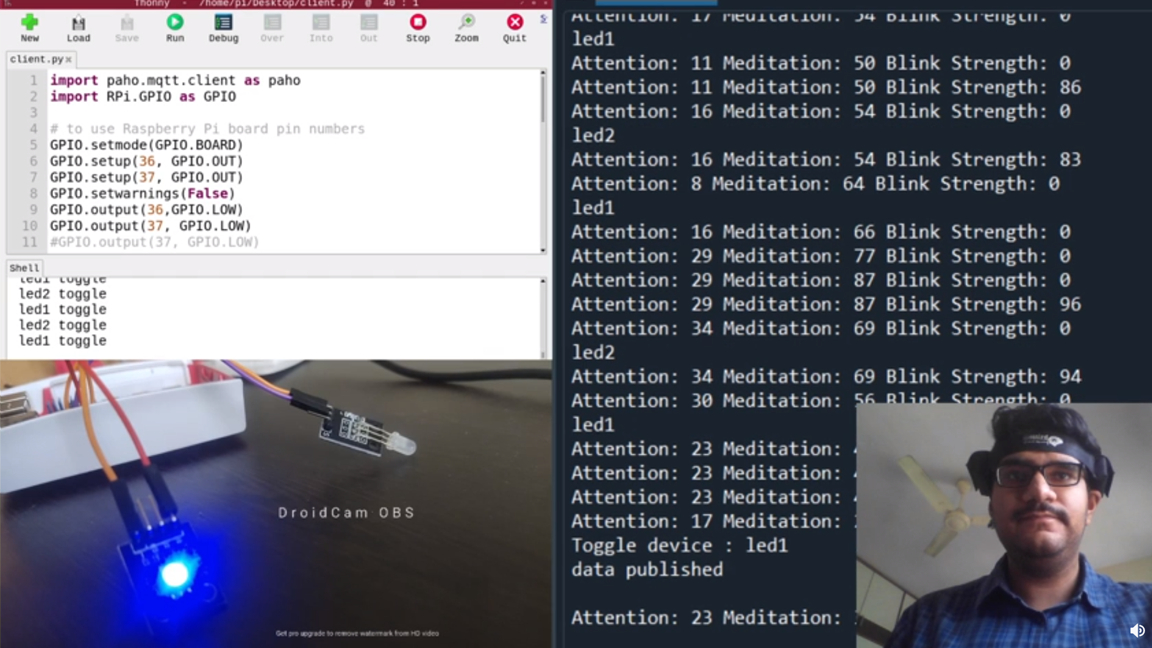You read that title correctly, this maker is using the power of his mind, or brain waves, to control LEDs with a Raspberry Pi. The trick to every good Pi project is finding the right hardware to attach, and this maker, known on Reddit as The_Wolfiee, opted to use a brain-computer interface (BCI) device as the primary controller for a few LEDs.
The BCI scans for brain activity using a sensor that attaches to the user’s forehead. The EEG data is sent to a Raspberry Pi interpreted via Python, which checks for specific changes to trigger the LEDs.
The best Raspberry Pi projects are the ones anybody can use, and this one is extra simple! Blinking your eyes causes a specific and measurable change that is detectable by the Python application.
One blink will allow the user to select an LED, and each single blink will rotate through the possible LEDs. When the desired LED is highlighted, two consecutive blinks will turn it on. To close the application, users must blink three times.
The sensor comes from Neuro Sky’s Mindwave Mobile headset. This option is much cheaper than medical-grade devices but comes at the sacrifice of a few additional electrodes.
There are a few Python libraries on GitHub designed just for the Mindwave Mobile sensor, so it’s definitely possible to create your own brain-powered Pi projects. Check out the full thread on Reddit to see this mind-blowing project in action.
